Kerala, often called “God’s Own Country,” is renowned for its picturesque backwaters, lush greenery, and golden beaches. However, hidden amidst this coastal beauty lies another enchanting aspect of the state – its majestic mountains.
From Coast to Summit, the charm of mountains in Kerala beckons travelers to explore its unspoiled wilderness and embrace the serenity of elevated landscapes. In this article, we will journey through the verdant hills, delving into the history, biodiversity, and allure these mountains offer.
1. Anamudi
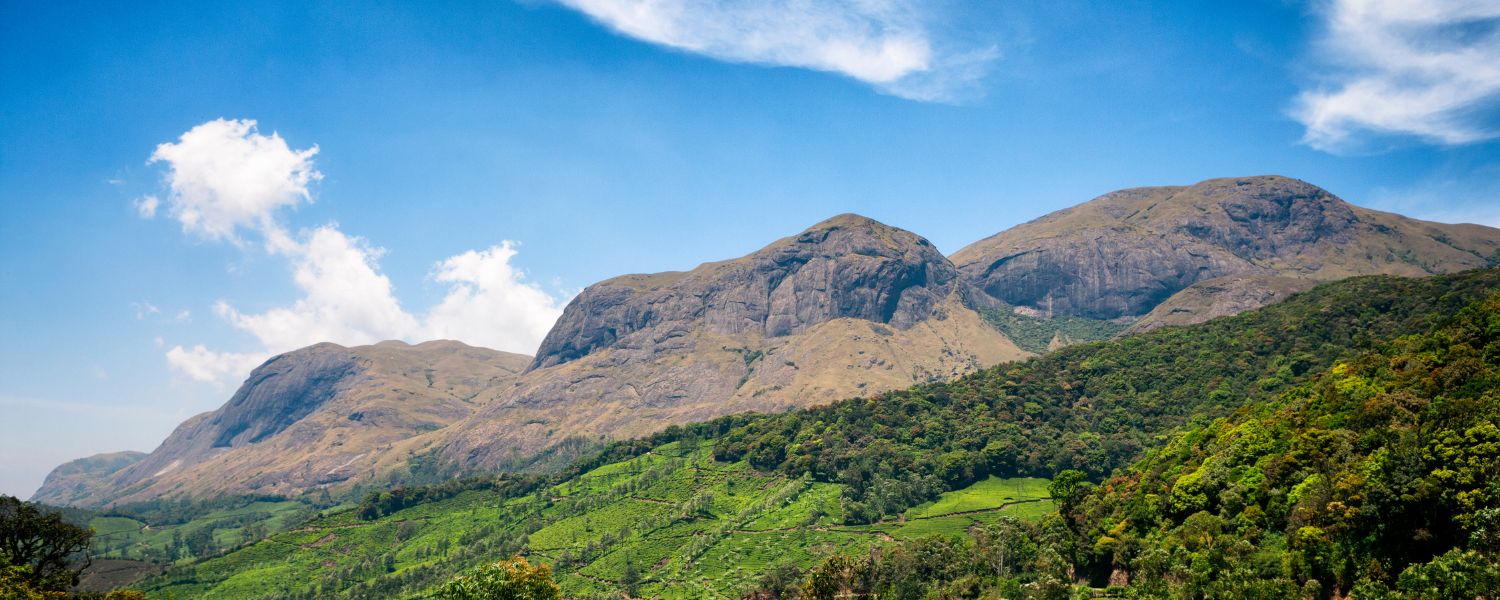
Anamudi, situated in the Western Ghats of Kerala, is the tallest peak in South India, standing at an impressive elevation of 2,695 meters (8,842 feet). Its name translates to “Elephant’s Forehead,” owing to its unique appearance resembling an elephant’s head.
The mountain has a rich history and cultural importance among the local tribal communities who consider it sacred. Historically, Anamudi was a natural boundary between the Kingdoms of Travancore and Cochin. Fauna and flora abound in Anamudi, making it a biodiversity hotspot. It is home to several endangered species, including the Nilgiri Tahr, a rare mountain goat endemic to the Western Ghats.
Other wildlife species found here are elephants, langurs, leopards, and various bird species. The slopes are covered with dense evergreen forests, sholas (high-altitude montane forests), and grasslands, contributing to the mountain’s ecological significance.
2. Meesapulimala
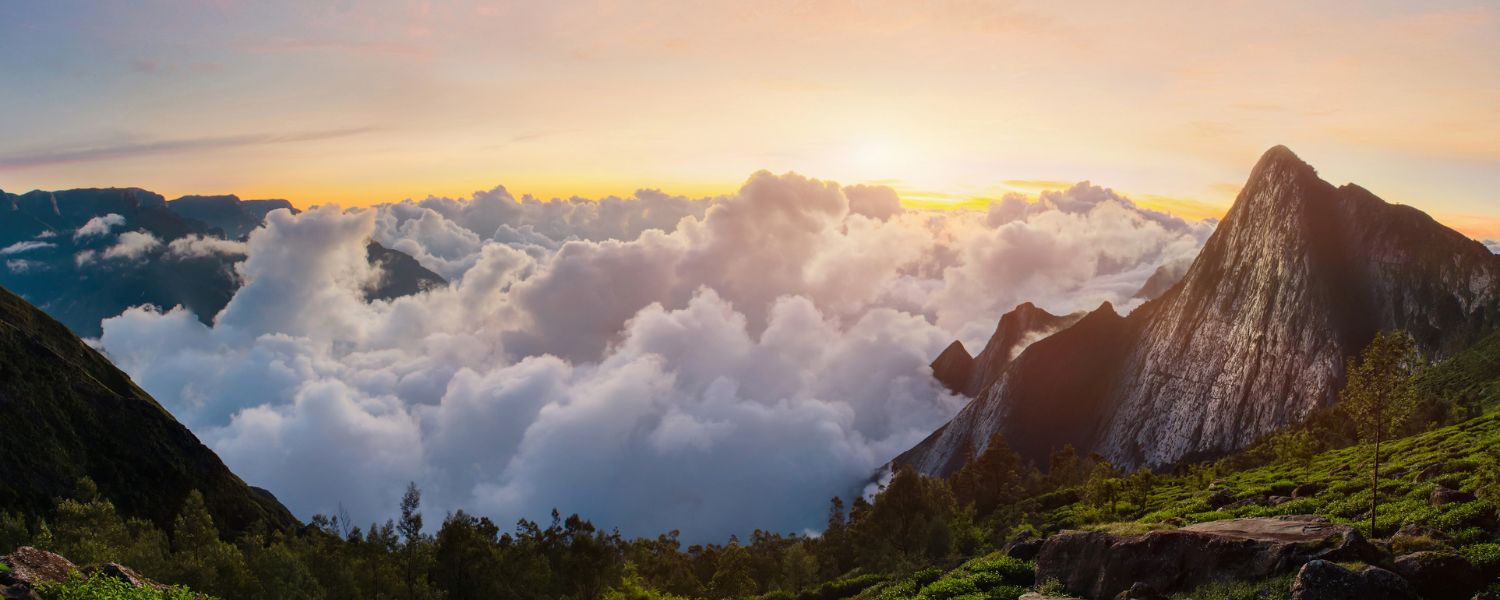
Meesapulimala, translated as “Tiger’s Hill,” is another prominent peak in the Western Ghats of Kerala, located near the hill station of Munnar. It stands at 2,640 meters (8,661 feet) and offers amazing panoramic views of the surrounding landscapes.
The mountain has historical links to the ancient Tamil epic, Silappathikaram, which refers to the beauty of Meesapulimala in its verses. The fauna and flora of Meesapulimala are as diverse as they are captivating. The area is part of the Eravikulam National Park, known for the Nilgiri Tahr conservation program.
Besides the Nilgiri Tahr, you can spot other animals like elephants, sambar deer, and the endangered grizzled giant squirrel. The lush green slopes are adorned with rare orchids, rhododendrons, and exotic plant species.
3. Agasthyarkoodam
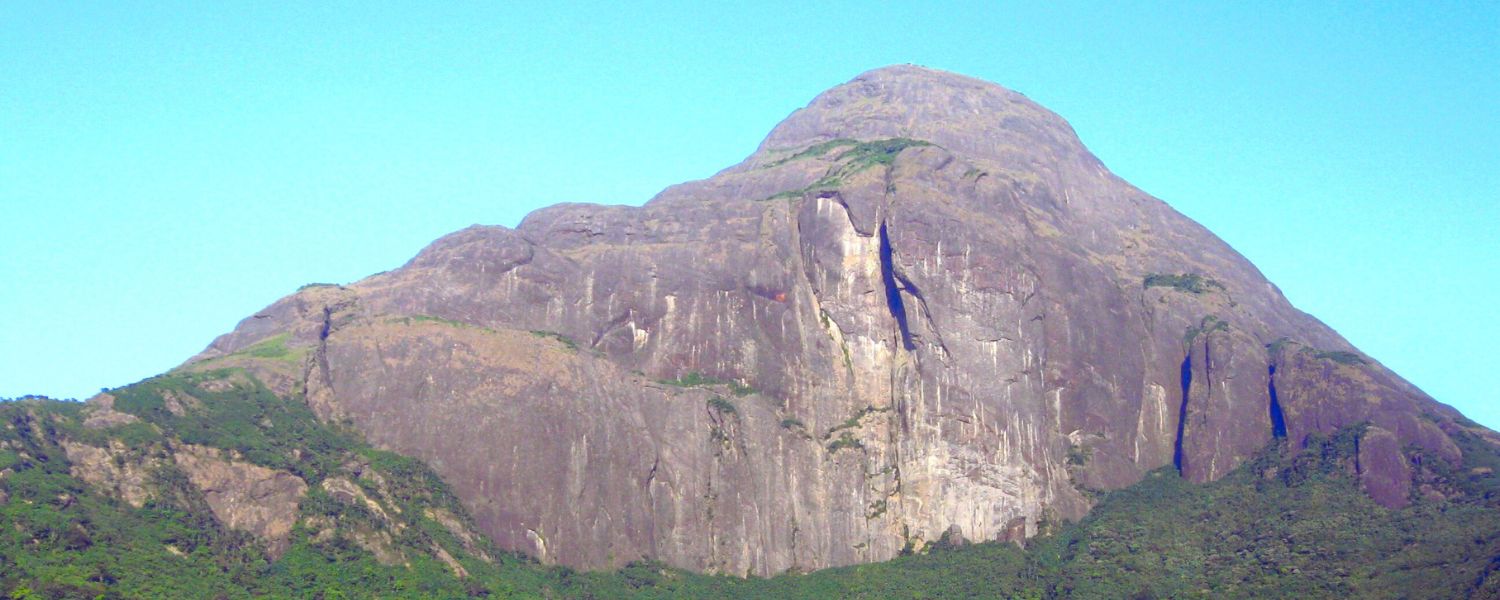
Agasthyarkoodam, named after the sage Agastya, is a peak on the southern side of the Western Ghats in Kerala. It is renowned for its spiritual significance and is often associated with the sage’s meditation and hermitage. The mountain also plays an important role in the mythology of Kerala and is revered during the Agasthyakoodam trek, which is held annually.
The mountain’s dense forests are home to a wide range of fauna, including the Nilgiri Langur, Indian giant squirrel, and various species of endemic birds. It is also known for its unique medicinal plants and herbs, contributing to its status as a UNESCO World Heritage site.
4. Chembra Peak
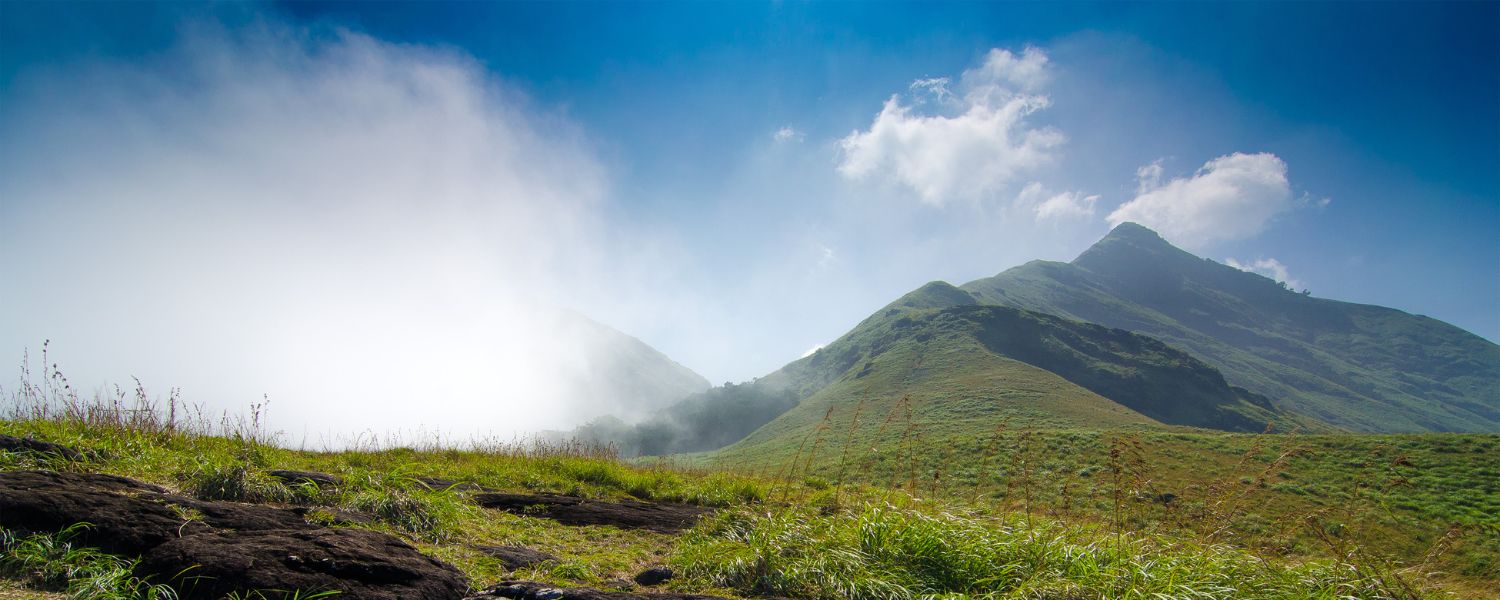
Chembra Peak, located in the Wayanad district of Kerala, is the tallest peak in the Western Ghats of the region. Standing tall at an elevation of approximately 2,100 meters above sea level, this majestic peak is a well-known destination for trekkers and nature enthusiasts.
The mountain is shrouded in mythology, believed to have been formed when Lord Vishnu’s ‘Chembra’ bow fell here during a fight with the demon Banasura. The trek to Chembra Peak takes visitors through lush tea plantations and dense forests, offering breathtaking views of the surrounding valleys and heart-shaped Chembra Lake, situated en route.
The fauna and flora of Chembra Peak are rich and diverse. The forested slopes are home to various wildlife, including elephants, deer, leopards, and many other species of birds. The area boasts a range of medicinal plants, herbs, and unique flora, making it an essential part of Kerala’s biodiversity. Trekkers might come across vibrant butterflies fluttering around and hear the distant calls of birds as they explore the scenic trails of Chembra Peak.
5. Banasura Hill
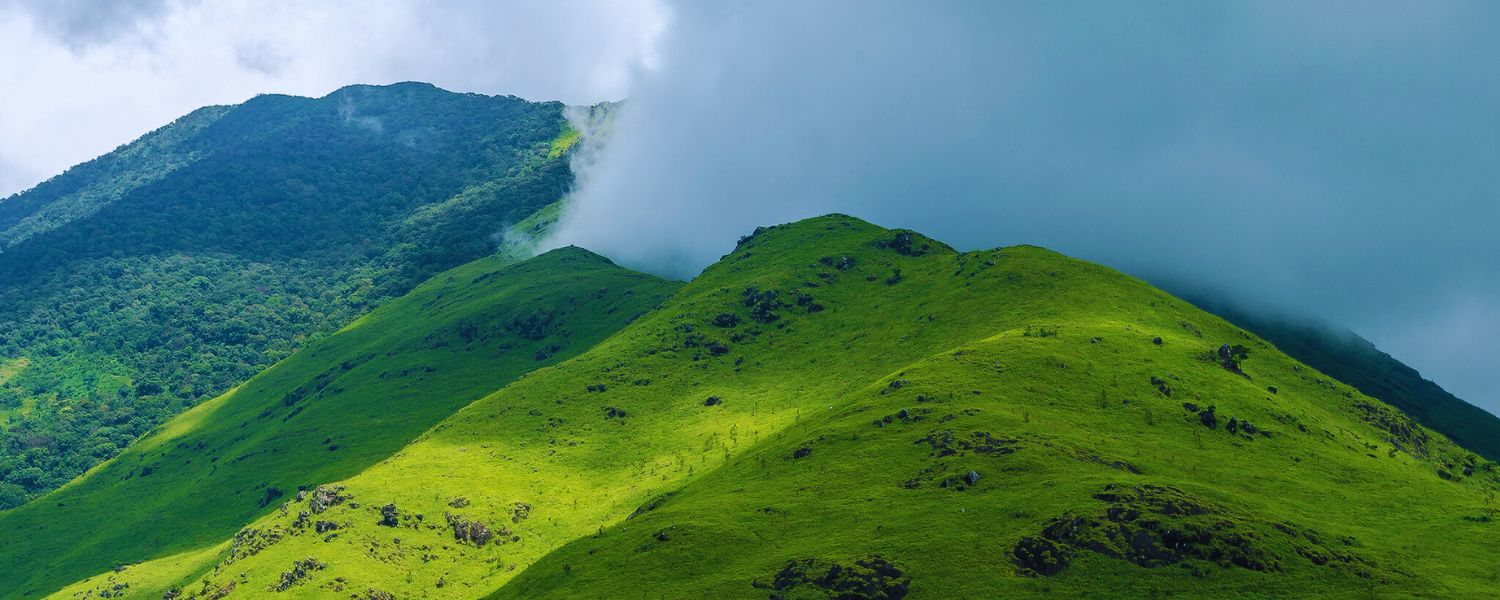
Banasura Hill, located in the Wayanad district of Kerala, is part of the Western Ghats and the second-highest peak in the region. This ancient mountain has a storied history dating back to the time of Banasura, a legendary asura (demon) king mentioned in Indian mythology.
According to the Puranas, Banasura performed severe penance on the hill, seeking blessings from Lord Shiva. The hill was named after him due to this mythological connection. The lush forests surrounding Banasura Hill are home to various wildlife, including elephants, wild boars, and various species of birds.
The area’s rich biodiversity also encompasses several unique plants and trees, some of which have medicinal properties. Trekking to Banasura Hill allows visitors to immerse themselves in nature’s tranquillity and appreciate the ancient tales intertwined with the landscape.
6. Paithalmala

Paithalmala, situated in the Kannur district of Kerala, is a picturesque hill station and a lesser-known gem in the state’s mountainous landscape. It stands at approximately 1,372 meters, offering amazing views of the valleys below and the distant Arabian Sea.
The name “Paithalmala” translates to “the hill of the phantom,” the region is steeped in folklore and legends, adding an air of mystique to the mountain. The forests around Paithalmala are home to diverse flora and fauna. Trekkers might encounter various species of butterflies, colorful birds, and even elusive wild animals like the Malabar giant squirrel.
The mist-covered slopes create an enchanting atmosphere, making it a popular spot for nature lovers and photographers. Paithalmala’s unique charm lies in its unspoiled beauty and the opportunity it offers to connect with nature in its purest form.
7. Nadukani

Near Peerumedu in the Idukki district, Nadukani is a lesser-known mountain with immense natural beauty and serenity. The word “Nadukani” translates to “see the country” in the local language, and indeed, visitors are treated to breathtaking views of the undulating valleys and distant mountain ranges from the top.
Nadukani is characterized by its sprawling grasslands and open meadows, offering a unique contrast to the dense forests in other parts of Kerala. The area supports a different kind of flora, including grass species like Cymbopogon and Themeda and various flowering plants.
The grasslands attract herbivores like Indian gaur, spotted deer, and wild boar. Besides, the region boasts a significant avian population, allowing birdwatchers to spot various bird species, including migratory birds, during the right season.
8. Vellarimala

Vellarimala, situated in the district of Wayanad, Kerala, is a mesmerizing mountain range known for its captivating beauty and rich history. Historically, this mountain range was an important trade route during the reign of ancient kingdoms. Today, it has become a popular destination for trekkers and nature enthusiasts.
The mountain’s name translates to “the range where the silver stream flows,” describing the numerous streams and waterfalls that adorn its slopes. The fauna of Vellarimala is diverse and vibrant. The forests surrounding the mountain are home to various species of birds, including Malabar grey hornbills, woodpeckers, and paradise flycatchers.
Lucky visitors might spot elusive wildlife, such as Indian gaur, sambar deer, and langurs. The mountain range also boasts an array of plant life, with lush forests of teak, rosewood, and eucalyptus trees, creating a serene and green environment.
9. Ponmudi

Ponmudi, meaning “Golden Peak,” is a picturesque hill station in the Western Ghats of Kerala. This mountain range is renowned for its striking landscapes and cool climate, offering a refreshing escape from the bustling city life.
The history of Ponmudi dates back centuries, and it was once a popular retreat for the royalty and aristocracy of the Travancore kingdom. The fauna in Ponmudi is diverse and abundant. The region is home to several endangered wildlife species, including the Nilgiri tahr, a mountain goat species, and the Travancore flying squirrel.
Birdwatchers will be delighted to encounter numerous species of birds, including the Malabar whistling thrush and painted bush quail. The mountain’s lush vegetation comprises tropical evergreen forests, tea gardens, and winding streams, creating an enchanting backdrop for travelers.
10. Panchalimedu

Panchalimedu, located in Idukki district of Kerala, is an enchanting hilltop region steeped in mythological significance. According to legend, this place is believed to be where the Pandavas from the Indian epic Mahabharata once spent their exile.
The name “Panchalimedu” translates to “the hilltop of five princesses,” adding to the mythical aura of the place. The fauna in Panchalimedu is a delightful mix of biodiversity. The forests surrounding the hill teem with various birds, including the great hornbill and the Indian paradise flycatcher.
Wildlife enthusiasts might spot animals like the Indian bison, Indian porcupine, and various species of snakes and reptiles. The landscape is adorned with grasslands, shola forests, and picturesque meadows, making it a perfect spot for nature walks and serene contemplation.
11. Dhoni Hills

The Western Ghats of Kerala hold a captivating history and rich biodiversity. These verdant mountains are said to have derived their name from “Dhoni,” a Malayalam word meaning a bowl-shaped valley. The hills have been integral to local folklore and rich cultural heritage, adding to their mystique.
The region’s diverse fauna and flora are a treat for nature enthusiasts. Endangered species like the Nilgiri tahr and Asian elephants roam the lush forests, while colorful bird species like the Malabar grey hornbill and great Indian hornbill grace the skies. Dhoni Hills also harbor many plant species, including medicinal herbs and exotic orchids, contributing to the region’s ecological significance.
Over the years, efforts have been made to conserve Dhoni Hills’ unique ecosystem and protect its wildlife. Eco-tourism initiatives provide visitors with guided treks and wildlife-spotting experiences, fostering an understanding of the delicate balance between humans and nature. The Dhoni Hills symbolize Kerala’s commitment to preserving its natural heritage for generations.
Conclusion
As our journey from coast to summit ends, we are left awe-inspired by the charm of Kerala’s mountains. Beyond the coastal allure, the state’s elevated landscapes beckon with their tranquil beauty, rich history, and diverse fauna and flora. The mountains of Kerala stand as a testament to the delicate balance between nature and human coexistence.
As travelers venture through these emerald peaks, they leave with a newfound appreciation for the precious gift of biodiversity and the importance of preserving such treasures for future generations. From the mist-covered peaks to the cascading waterfalls and dense forests, Kerala’s mountains have etched their allure into our hearts, inviting us to return and bask in their timeless charm again.










